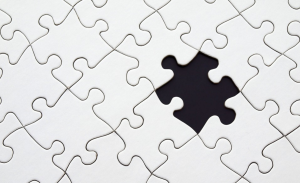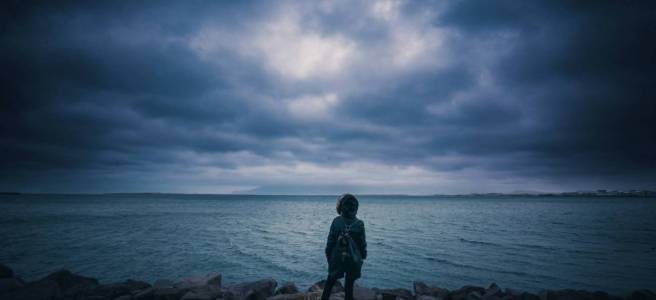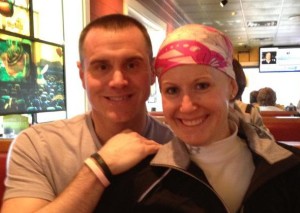
I don’t recall my first views of MD Anderson Cancer Center’s pink stucco exterior, or its halls lined with huge photos alternating between patient success testimonials, physician quotes of confidence about research and facility innovation, and picturesque beaches from across the globe. Salty tears and deathly fears quickly washed away any initial impressions.
What I do remember is feeling completely overwhelmed with the responsibility of keeping my husband, George, alive. That, the lobby, and feeling like all I saw around me was death and wheelchairs.
George is a doctor, a really good one. But when he was diagnosed with recurrent metastatic melanoma, he needed to disconnect from the reality of what he faced and allow me to vet the medical options available. He just wanted to play golf and escape, to bury his head in the sand pit.
He had been initially diagnosed with stage IIIA disease five years earlier and had done quite well on a drug called Interferon. It was a treatment meant to utilize his immune system to seek out and destroy any remaining, floating cancer cells in his system that weren’t cut out during surgery. He made it five years without incident, but there must have been a few crafty ones left that evaded the Interferon and took up residence because the cancer came raging back.
Melanoma is unlike any other cancer I know. You can never, ever relax your guard once you have been unlucky enough to be diagnosed with an advanced stage. It can resurface at any time, in any place and often, just when you think you are in the clear, it rears its head and proves just how silly and naïve you were to imagine you had any control at all. If cancer is evil, which I believe it is, melanoma may in fact be the devil.
Breast cancer, on the other hand, is like the minivan of the disease. It tends to be obvious and follow a relatively predictable pattern; there are lots of the same kinds and they’re pretty easy to spot. Sometimes breast cancer can fool you and stealthily hide a super-charged motor under the hood. Or it can occasionally house lots of friends behind its tempered glass, waiting to unload and create havoc in multiple parts of your body, but because breast cancer is so common, there are lots of places to have it treated and many options to try.
It may not be an accident that, as a breast cancer patient myself, I own an Odyssey. I guess it also might not be a coincidence that, as a notorious lead-foot, my cancer turned out to be pretty aggressive.
I certainly consulted MD Anderson (which is based in Houston, Texas) when I was diagnosed, especially given George’s successful experience there. But my case didn’t warrant traveling half way across the country to get the same treatment I could receive in my own backyard.
People can be directed to a place like MD Anderson because their case is highly unusual, but most often it’s because they have run out of options; their disease won’t allow them time to take more than one shot at killing it before it kills them.
These individuals need the best medicine our country has to offer, and they get it there every single day. But the initial walk through the place can make your stomach turn from the sight of so much discomfort, sickness and pain.
When George and I arrived for our first visit we had no idea what to expect. Our only hospital experiences to that point had been in rural or regional settings, and we knew no one else our age with cancer.
We were terrified of what we might hear, but also hopeful that the doctors there were ones who would be able to provide the options we were so desperately seeking. After a prognosis from another very reputable institution of approximately six weeks of life for George, I knew that this was our first (and last) stop.
I remember nothing about the drive to the hospital on the first day of our first visit; my recollection begins after handing the keys to the valet in front of the main lobby. It was a particularly hot early summer day, even by Texas standards, and getting into the building felt good after standing outside for just the few minutes it took to hand over the keys and a tip.
George and I walked toward the information desk, past the multiple seating areas filled with oversized upholstered chairs in muted blues and purples, with clusters of individuals in hushed, intimate conversation.
Some people had smiles, but most dotted their bloodshot, glassy eyes with tissues.
Streams of bubbles worked their way from the bottom up in straight lines in several floor-to-ceiling tanks of water the length of the wall, creating a watery, white noise backdrop I would come to count on. The air was a mix of fragrance over alcohol, no doubt from the hand sanitizing stations at every corner, replete with signs encouraging all visitors to use them regularly.
As George and I tried to get our bearings, wheelchairs rolled in a constant flow from one end of the lobby to the other. I couldn’t help thinking, as I looked on, that those patients carried in these shiny, chrome vessels could only be classified as passengers, not participants, in life.
They appeared so close to death already, their faces gaunt, skin gray with illness. Most were bald and wrapped in blankets or sweatshirts, while just outside the sliding glass doors the mid-June sun blazed so hot and so high it created a shimmer just above the sidewalk surface. Some wore masks, guarding them against any airborne infection that could prove too much for their weakened immune system.
I would later learn that, for those who went to a place like MD Anderson, a common cold could mean the difference between an ordinary interval between chemotherapy treatments and a delay; a luxury no longer afforded to patients this ill.
Time is, perhaps, the most valuable drug major cancer hospitals have to offer. Time and hope. Many people would pay any price, tolerate any discomfort and sacrifice everything in their personal lives to get both.
I guiltily avoided any eye contact with those riding in the wheelchairs. It went beyond wouldn’t—I couldn’t look at them in their eyes because, in their deathly gaze, I saw George’s future.
Up until then, cancer had been simply a term in the ether, a concept. The minute we stepped into that lobby it became an actual disease capable of killing my partner in life and in love. Even as George walked in pace and step next to me, the picture of health and vigor, I knew under his skin and within his organs with every passing moment his cells were dividing and spreading, attempting to take over.
As the months passed, I learned how to spot the veteran wheelchair “drivers,” the ones who can manage to simultaneously push both handles of the chair, drag an IV pole and avoid crashing into furniture or other people.
I would also get smacked with the reality that those who looked closest to death were often the ones fighting the hardest to avoid it. And that those sitting in the chairs weren’t hollow shells of their former selves, they had simply been leveled by the grind of disease, surgeries and treatments.
I discovered all of this because, eventually, George became the gaunt, gray passenger, and I became the veteran driver.









